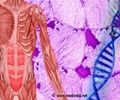
This is surprising discovery -- that networks all have skeletons and they are similar, the journal Nature Communications reported.
"Infectious diseases such as H1N1 and SARS spread in a similar way, and it turns out the network's skeleton played an important role in shaping the global spread," Dirk Brockmann, senior study author from Northwestern University, was quoted as saying in the journal Nature Communications.
"Now, with this new understanding and by looking at the skeleton, we should be able to use this knowledge in the future to predict how a new outbreak might spread," said Brockman, associate professor of engineering sciences.
Mammals have evolved to look very different despite a common underlying structure (think of a human being and a bat), and now it appears real-world complex networks evolve in a similar way, according to a university statement.
Complex systems -- such as the Internet, Facebook, the power grid, human consciousness, even a termite colony -- generate complex behaviour.
Advertisement
Brockmann and his graduate students, Christian Thiemann and Daniel Grady, developed a method to identify a network's hidden core structure and showed that the skeletons possess some underlying and universal features.
Advertisement
By computing their overall strength, or importance, of each link in the network -- researchers were able to produce a skeleton for each network consisting of all those links that every node considers important. And these skeletons are similar across networks.
Source-IANS








